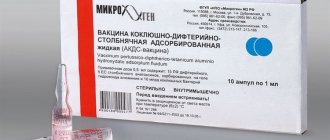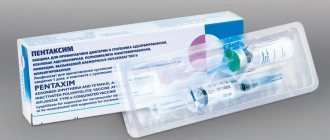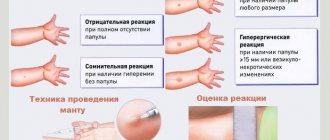For a long time, people have tried to fight infections that have claimed hundreds of lives. Through trial and error, humanity came to the invention of vaccine prevention. This path was long, difficult, but nevertheless successful.
With the invention of vaccines, the number of deaths from serious diseases has decreased significantly. The procedure was constantly changing. The first vaccinations were a real experiment. Things didn't always go according to plan. Brave souls who decided to administer vaccines sometimes died.
The drugs were constantly changing, the compositions were improved, so that the body could tolerate immunization without consequences. Today, vaccinations can protect against many infections. Vaccination is carried out as planned or urgently. Drugs are administered in different ways, most often through injections (intramuscular, subcutaneous or intradermal) or drops (orally). Injections can be placed in different places, depending, as a rule, on the age of the patient. One of the methods of administering the vaccine is vaccination under the shoulder blade, when the corresponding agent is injected under the skin. Similar injections are indicated for children after one year and for adults.
What kind of vaccination is given under the shoulder blade?
Vaccines injected into the area under the shoulder blade include:
- DTP or ADS - protection against diseases such as whooping cough, diphtheria and tetanus;
- CPC – complex against rubella, mumps and measles;
- from influenza, encephalitis, hepatitis B.
Older people are often offered the shingles vaccine.
What is the name of the vaccination under the shoulder blade at 14 years old?
At the age of 14, according to the regulations of the National Vaccination Calendar, revaccination against several infections is carried out. Pupils of general education institutions receive injections directly in the school medical office. This occurs provided that the parents have signed consent for their child to be vaccinated. Otherwise, the teenager is not allowed to participate in the procedure, just as if there is a medical outlet. In the absence of contraindications, a vaccine injection can be given free of charge in the clinic to which the patient is assigned, or in a paid clinic that has the appropriate permit.
At the age of 14, adolescents are recommended to be immunized against:
- hepatitis B;
- rubella. The infection is scary for pregnant women, as it can provoke the development of severe defects in the fetus or its death, so it is better for girls to be vaccinated in adolescence;
- mumps. Popularly, “mumps” is an infectious disease transmitted by airborne droplets and is extremely contagious. There have been cases where entire classes were placed under quarantine. The disease is especially dangerous for boys as it can cause infertility;
- tuberculosis. The disease is caused by Koch's bacillus; BCG is given to a child in the first days after birth; adolescents need revaccination. Anti-tuberculosis revaccination cannot be neglected. Some frightening statistics - every year 10 thousand people die from the disease, 15 million become infected, and out of five infected, one dies;
- whooping cough, diphtheria, tetanus (complex);
- polio.
The listed vaccinations are routine. In addition to them, there are also seasonal ones that protect against influenza or encephalitis.
Flu vaccination is an excellent preventative measure for teenagers. Despite the fact that the virus mutates every year, vaccinated people become infected much less often. Sick people tolerate the flu more easily, and the likelihood of developing complications is reduced, even if the vaccine contained other strains. Information about vaccine-associated influenza is unfounded, since non-live vaccines are used during immunization.
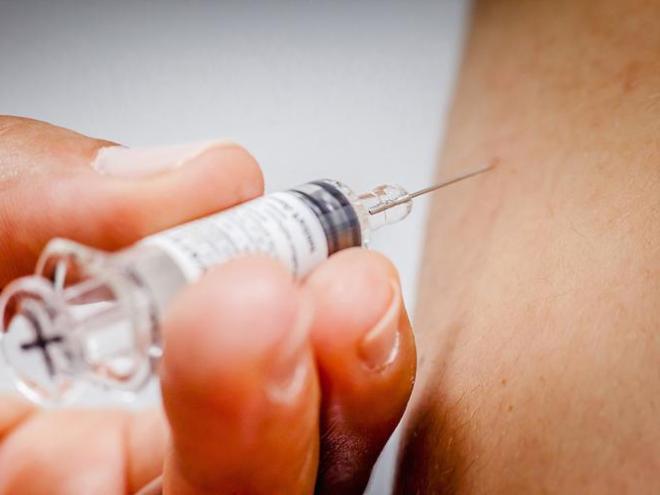
Some of the vaccines are complex; they are designed to protect the body from several infections at once (DTP). It is a mistake to believe that children who get sick often should not be vaccinated. On the contrary, vaccination will help them strengthen their immunity.
Why are adults vaccinated under the shoulder blade?
Adult patients are injected under the shoulder blade with drugs intended for revaccination against diphtheria and tetanus; adults are vaccinated once every 10 years as planned.
You can urgently get vaccinated against tick-borne encephalitis (usually outbreaks of the disease are recorded in mid-May).
Patients over 55 years of age may be offered a vaccine against shingles (a type of herpes) under the shoulder blade.
Description and composition of the vaccine
Pharmacological companies produce several popular vaccines against diphtheria, whooping cough and tetanus: Infanrix, Pentaxim, Tetrakok, DTP and ADS-M. The composition of all the listed drugs is approximately the same. It includes diphtheria and tetanus toxoids, inactivated pertussis particles. All these components force the body to produce antibodies and form immunity against the corresponding diseases.
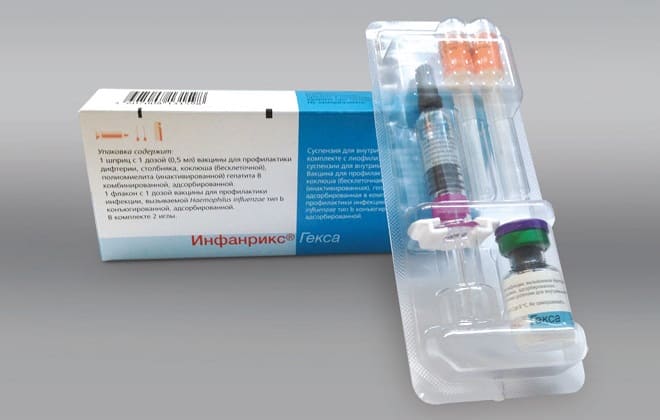
The prophylactic complexes DPT and ADS-M differ in the presence of whooping cough component in the first. Therefore, the DTP complex is used to vaccinate children under 6 years of age. More adult patients are prescribed the ADS-M vaccine. This vaccination is given at 14 years of age and at 7 years of age. Then it is repeated once every 10 years.
In some cases, injections into the subscapular space for children are performed in medical offices of educational institutions: kindergartens, schools, orphanages and boarding schools. In these cases, health care providers notify parents and legal representatives of children in advance about vaccination, and also provide them with written permission for medical intervention.
The vaccine against measles, rubella and mumps (MMR) is represented on the pharmacological market by the drug Priorix.
It contains weakened rubella, measles and mumps viruses artificially grown in chicken embryo cells.
Anti-encephalitis vaccinations (FSME-Immun, Encevir, Klesch-E Vac and Encepur) are composed of deactivated strains of tick-borne encephalitis viruses and adsorbents.
Protection against influenza is provided by vaccines consisting of weakened strains of pandemic influenza A and B viruses diluted in a buffer solution (Vaxigrip, Fluarix and Grippol Neo).
Mechanism of action of vaccines
Composition of a complex vaccination
The composition of the medicine includes microorganisms, as well as protein components. Penetrating into the human body, they trigger the process of forming antibodies to certain pathogens. If a person encounters the microbes from which he has been vaccinated, it will be much easier for his immune system to suppress the development of the disease. If pathology has developed, it will be easier to tolerate, without serious complications.
Repeated administration of drugs to build immunity to diseases is required after a long period of time has passed. Diphtheria and tetanus can be re-vaccinated before traveling abroad, especially to hot countries.
Annual vaccination against influenza and tick-borne encephalitis is a mandatory procedure for residents of regions with high population concentrations and an increased risk of these diseases. In the absence of antibodies prepared by injection, antibiotics and antiviral drugs cannot cope with the extremely rapid course of the infection.
Types of drugs for the formation of antibodies
Composition of the Priorix vaccine, synthesized on chicken embryos.
Medicines for injections are complex and single-component. More often, polyvaccines are used to combat tetanus, whooping cough and diphtheria. This group includes the following drugs: “ADS-m”, “DTP”, “Infanrix”, “Pentaxim”, “Tetrakok”. They contain diphtheria and tetanus toxoids and whooping cough particles.
“DPT” and “ADS-m” are similar vaccines in action, but the second one does not contain whooping cough particles. The first vaccination is most often used for children under 6 years of age; at 7-14 years of age, the second version of the drug is used.
To combat rubella, measles and mumps, Priorix is used, which contains cells of these viruses. And they are cultivated in chicken embryos, so the vaccine has specific contraindications - an allergy to egg white.
Why is the vaccine placed under the shoulder blade?
There are several reasons for administering drugs under the shoulder blade:
- the product is quickly distributed, since in this place the layer of subcutaneous fat is minimal;
- lower risk of complications typical for intramuscular injections;
- the substance enters the blood gradually.
The last reason is the most important because this is how live vaccines are administered. If they enter the blood quickly, the immune system will instantly destroy them, and immunity will not have time to form. When an injection is given under the shoulder blade, the drug gradually penetrates into the blood, allowing the necessary antibodies to be produced.
Is there an alternative option for administering the vaccine?
There is a backup option. It is necessary in cases where the child does not have enough muscle mass, as well as when the patient is too young (up to a year). Then the vaccines are injected into the thigh or shoulder.
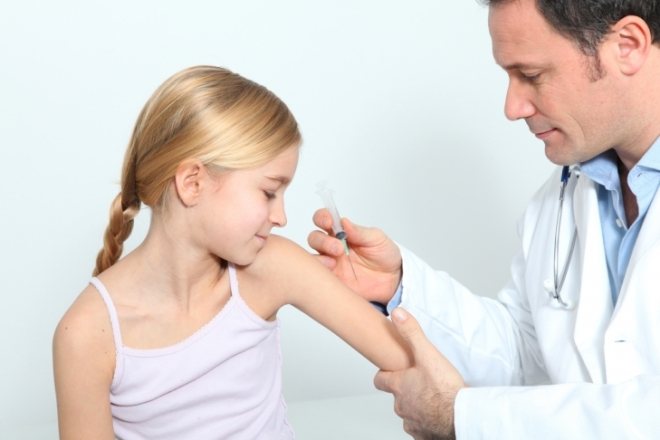
Cost of services
| CODING FROM ALCOHOLISM |
| Coding with AcviLong (SPECIAL!) | |
| for a period of 1 year | 4500 rub. |
| for a period of 2 years | 5500 rub. |
| for a period of 3 years | 6500 rub. |
| Coding with Algominal | |
| for a period of 1 year | 5000 rub. |
| for a period of 2 years | 6000 rub. |
| for a period of 3 years | 7000 rub. |
| Drug coding MST; SiT; It-21 | |
| for a period of 1 year | 3500 rub. |
| for a period of 2 years | 4500 rub. |
| for a period of 3 years | 5500 rub. |
| Methods of drug administration: intravenous / intramuscular / subscapular | |
| Coding with Esperal (SPECIAL!) | |
| for a period of 6 months. | 2500 rub. |
| for a period of 1 year | 3500 rub. |
| for a period of 2 years | 4500 rub. |
| for a period of 3 years | 5500 rub. |
| DISCOUNTS and PROMOTIONS | |
| Repeated appeal | 5% |
| Disabled people | 10% |
| Combatants | 5% |
| Large families | 10% |
| Card holders | 10% |
Please note that this price list does not provide a complete list of the Clinic’s services. You can find the full price list on this page: “Our prices”. You can also call for any service by phone 8 (495) 142-59-03
Indications and contraindications for vaccination
Vaccinations under the shoulder blade are intended primarily to prevent serious infections. This is their first and main indication.
Urgent tetanus vaccination is indicated if the patient:
- damaged skin as a result of a cut, burn or injury;
- an animal bite was detected;
- There are no data on vaccinations before surgery.
The flu vaccine is indicated from six months of age. It is especially recommended if the patient is at risk, namely:
- age (over 60 years);
- often suffers from bronchopulmonary diseases or is diagnosed with bronchial asthma;
- suffers from diseases of the endocrine and cardiovascular systems;
- with chronic kidney failure;
- with weakened immunity, when taking immunosuppressants, cytostatics.
Vaccination against encephalitis, which is carried by ticks, is recommended for persons living in areas with a high risk of infection, or when planning a trip to such places.
Vaccinations are especially important for adolescents, since at the age of 14-15 the effect of many previously administered vaccines expires. Children at this age are at risk of developing drug addiction. At the same time, many young people begin to be sexually active. All this can lead to infection, first of all, with hepatitis B. Vaccination under the shoulder blade at the age of 14 will help to avoid unpleasant consequences.
Drugs administered under the shoulder blade have individual and general contraindications. The latter include:
- individual intolerance to the components of the product;
- allergy to chicken protein;
- chronic disease in the acute stage;
- acute infection, acute respiratory infection;
- fever.
You will have to refuse DPT if, after the previous injection, the following were observed:
- convulsions (within three days after injection);
- swelling at the injection site with a diameter of more than 8 centimeters;
- unexpected drop in blood pressure;
- continuous crying (more than three hours) for two days after vaccination.
Live vaccines (BCG, MMR, polio) are contraindicated:
- pregnant women;
- patients with immunodeficiency;
- patients with oncology.
Vaccination: pros and cons
Opinions are divided on the need for vaccination. Opponents focus on the prevalence of side effects and provide statistics on the severe consequences of vaccinations. However, thanks to immunoprophylaxis, humanity prevents epidemics and pandemics of dangerous infectious diseases, including:
- Diphtheria is a highly contagious infectious disease caused by the diphtheria bacillus. The onset of the disease is similar to acute respiratory infections. The disease is dangerous due to the action of a toxin secreted by the bacterium, which leads to severe damage to the heart muscle, paralysis, and respiratory arrest.
- Whooping cough is a bacterial infection accompanied by attacks of spasmodic coughing and suffocation, and is especially dangerous for children under 2 years of age.
- Tetanus is a disease that affects the nervous system, causing muscle paralysis and generalized seizures. Complicated by paralysis of the respiratory muscles, which leads to death. Mortality 17-15%, difficult to treat.
It is impossible to protect a child from infection. He can become infected in the yard, at school, or in a store. To protect against disease, he needs immunity. Why run the risk of infection and complications when there is specific prevention?
Just because an adult or child has a vaccination does not mean that he or she will not get sick. But the likelihood of the disease progressing in a severe form and the risk of severe complications is minimized. For example, the risk of developing paralysis of the lower extremities after polio far exceeds the risk of adverse reactions from vaccination.
To exclude the circulation of the pathogen among the population, a layer of vaccinated people of at least 95% is required. This number of vaccinated people forms population immunity. With the help of immunoprophylaxis, humanity defeated smallpox and significantly reduced mortality and disability from infectious diseases.
Is the tetanus vaccine dangerous?
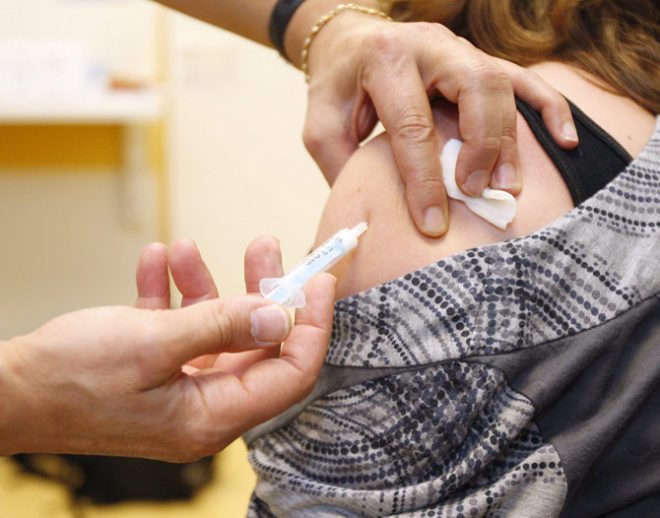
According to official statistics, adverse reactions after tetanus vaccination occur in every fourth vaccinated patient. For the majority, such consequences of vaccination under the shoulder blade disappear without drug treatment after 2-3 days and are not a cause for concern.
Despite all the beliefs of doctors, there is information on the Internet about the dangers of tetanus vaccination and numerous complaints about the vaccine from people who have developed problems after vaccination:
- pain at the injection site;
- lump formation after vaccination;
- change in sensitivity in the limb;
- increase in body temperature.
Patients tend to regard similar symptoms as an incorrect injection or injection of a low-quality vaccine against tetanus under the shoulder blade. This opinion is erroneous. The described changes belong to the usual reactions to the prophylactic administration of an immunobiological drug.
Complications of immunization threaten human life and health. These include anaphylactic shock, angioedema, the development of severe inflammation or an underlying disease. It is good that such pathological conditions occur in isolated cases. Therefore, you should not be afraid of the tetanus and diphtheria vaccine, which creates real protection against the most dangerous infections.
How necessary is the diphtheria vaccination?
It’s probably not worth talking about once again how dangerous diphtheria can be for an unvaccinated child. However, not all parents fully understand the consequences of completely refusing vaccinations, and therefore one can often find heated discussions about the dangers of vaccinations themselves and their apparent uselessness. Objections of this kind have been circulating among the population for quite a long time, but it should be remembered that the infant mortality rate for a disease such as diphtheria reaches seventy percent (if you do not consult a doctor in time to recognize the disease and do not admit the child to a hospital under the supervision of specialists).
In addition, the toxins secreted by the causative agent of the disease affect the mucous membranes of the respiratory tract, causing the appearance of plaque and films that block the free access of air, and it is very difficult to remove such plaque. However, even after specialists remove the films, consequences remain in the form of ulcerated mucous membranes of the larynx, and in severe cases, tissue necrosis. Treatment of this disease also involves the use of medications from the group of antibiotics, which will take a lot of time and effort.
Of course, this does not mean that by getting vaccinated, you are 100% insured against diphtheria infection, but statistics show that the risk of infection in this case is less than ten percent, and the course of the disease will be much less life-threatening. Well, one last thing: without information about such a vaccination, it will be very difficult for an adult to get a job in medicine, education, animal care and many other areas.
Contraindications and side effects for diphtheria vaccination
In general, it is the minimum number of contraindications that is an important advantage of diphtheria vaccinations.
Thus, vaccination is not carried out if there is an allergic reaction to any of the components of the vaccine. In addition, the vaccine is not given if you have diseases of the nervous system, serious diseases of the cardiovascular system (heart defects), congenital and chronic kidney diseases, and some forms of blood diseases. Vaccination is contraindicated for diseases of the endocrine system (severe forms of diabetes, thyrotoxicosis, etc.), acute immunodeficiency states, congenital enzymopathies, and similar pathologies. In most cases, when vaccination is contraindicated, the child has an attending physician who deals with his underlying disease, and therefore he warns parents that in their case the vaccination is not required.
The majority of children easily tolerate both the vaccination itself and possible reactions to it. The main thing is that vaccination is not carried out during the child’s illness, even if the illness is not too serious.
In addition, the doctor will recommend postponing the vaccine for pregnant women if the pregnancy is less than twelve weeks.
How to prepare for vaccination
To prepare for the procedure, you should first find out what you will be vaccinated against and what vaccine will be used.
Young patients must be examined by a pediatrician. Parents should disclose any allergies or chronic illnesses. Adults also visit a general practitioner. Only after an examination does a specialist give permission for vaccination or prohibit it. For patients who have recently had an illness, the doctor will send them for additional examination, including tests.
If there is a suspicion of neurological diseases, you will have to contact a neurologist. The specialist will give an opinion on whether vaccination can be carried out or whether it is better to postpone the procedure.
For immunization to go smoothly, you should not:
- visit crowded places before and after the procedure; if your baby is being vaccinated, it is recommended not to keep him in line to avoid unnecessary contact with sick children;
- before the upcoming vaccination, try new, unknown and unusual foods; this will be an additional test for the immune system;
- swim in a pool or open water to prevent germs from getting into the wound; You can wash.
Vaccination dates
Rubella vaccination, when is vaccination done and how long does immunity last? Vaccination of the population is carried out only with drugs that have passed clinical trials.

Monitoring vaccinated people and determining the level of their antibodies to rubella made it possible to establish that
:
- in a small proportion of people immunity remains for life;
- in approximately 95% of unvaccinated people, immunity against rubella works during the first 15-20 years after vaccination;
- For some, antibodies are not activated after the first vaccination.
In this regard, a unified vaccination plan for the population has been developed and is being used in Russia:
- The first vaccination against rubella is carried out at 6 years of age;
- revaccination at 6 and 15-17 years of age.

Giving children the first and second vaccinations allows them to be reliably protected from rubella before puberty. Then immunity gradually decreases, so after 15 years another vaccination is necessary. Vaccination dates may be postponed for medical reasons.
After reaching 18 years of age and up to 35-40 years of age, all women are given the vaccine if 5 or more years have passed since the last vaccination against rubella.
How many times should the rubella vaccine be given during a lifetime? The official vaccination calendar provides for three-time vaccination against the rubella virus, but vaccination can be carried out more often if indicated. The World Health Organization recommends that adults be vaccinated every 10 years.

Vaccination technique
An algorithm for carrying out the procedure was developed especially for medical office workers performing the vaccination procedure. It must not be violated, otherwise the effect will not be achieved. Failure to follow the rules may lead to undesirable consequences. The injection should be done like this.
- Wash your hands with soap, put on and disinfect gloves.
- Using an alcohol wipe, wipe the ampoule containing the drug, open it, fill the syringe with the contents, releasing excess air.
- Treat the injection site twice with alcohol wipes.
- Take the syringe by placing your index finger on the needle cannula, your little finger on the piston, and the rest should hold the syringe barrel.
- Grab the skin roll and quickly and confidently insert a needle into its base from bottom to top at an angle of 45 degrees to the surface of the back, while a third of the needle should remain outside.
- Release the grip and inject the contents of the syringe, gently pressing the plunger.
- Remove the syringe, holding the needle cannula, pressing the alcohol pad to the injection site.
- Without removing the napkin, perform a light acupressure massage of the skin, helping the product to distribute evenly.
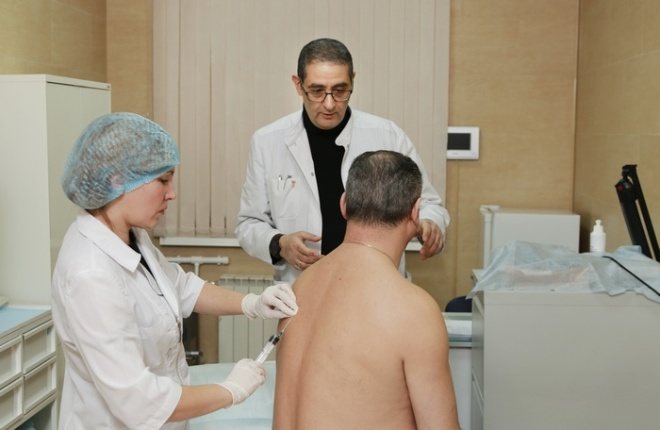
After administering the vaccine, the health worker must fill out the appropriate documentation - make notes in the journal and the vaccination certificate.
Does it hurt to get vaccinated?
Unlike other areas where injections are given (hip or shoulder), the subscapular region has weak innervation and blood supply. A professional procedure ensures painlessness and low blood loss.
Pain may arise not from the injection, but from a reaction to the drug, as well as in the case of prolonged presence of the injected substance in the tissues.
A painful reaction occurs due to:
- active components of the vaccine - they force the immune system to resist them, so inflammation is possible;
- excipients that hold the drug at the injection site to ensure the desired immune response;
- violations of the injection algorithm.
Benefits of injection coding for alcohol addiction

- Can be performed both in a hospital setting and at home.
- Speed of implementation.
- High efficiency.
- A wide range of drugs for coding, which allows you to select the appropriate drug taking into account the patient’s health characteristics and financial capabilities.
- There are no adverse reactions, so the person can immediately return to work or study.
- Compatibility with other ways to overcome cravings for alcohol.
- Duration of action.
- The ability to do coding with an injection in the buttock, under the shoulder blade or intravenously at any time - we work around the clock.
If you have any questions or find out how much the procedure costs, please call 8 (495) 142-59-03 . Call! We will definitely help you cope with alcoholism effectively and safely.
Normal body reaction to vaccination
The drug enters the body, the immune system recognizes the “enemy” and begins to fight it. In the process of this struggle, negative manifestations of a general or local nature are possible.
General reactions:
- weakness and malaise appear;
- the temperature rises.

Local reactions:
- swelling;
- redness.
Patients often complain of back pain after vaccination. Sometimes bumps appear at the injection site. Such seals should be lubricated with ointments that have a resolving effect, and compresses should be placed on them.
All these reactions indicate that the body is suppressing the introduced antigen. Such manifestations are normal for three days. If after this time they do not go away, you should immediately consult a doctor.
Possible side effects
Complications make themselves felt by the following symptoms:
- unbearable and continuous headache, insurmountable weakness - may signal meningitis or encephalitis;
- a sharp decrease in blood pressure, pallor after administration of the drug - shock syndromes;
- hives, redness, itching are signs of an allergy;
- convulsions, dizziness, fainting;
- difficulty breathing, pallor or blueness of the face are signs of angioedema.
If these signs appear, you should immediately seek qualified help.
Normal and pathological reaction
In the first days, the temperature may rise due to the reaction of the immune system.
Since the body recognizes the components of the injection as an “enemy,” the immune system begins to attack them. Normal manifestations of this reaction include:
- moderate increase in temperature;
- weakness, malaise;
- redness and swelling in the area where the drug was administered;
- minor back pain and small bumps.
When lumps appear, doctors recommend using absorbable ointments.
Acute side effects that require medical attention:
- difficulty breathing;
- blue or pale face indicating swelling;
- itching, urticaria, redness;
- a sharp decrease in pressure;
- continuous headache indicating encephalitis or meningitis.
You should immediately consult a doctor to avoid serious consequences for the body as a result of the appearance of these symptoms.
Giving an injection under the shoulder blade at the age of 14 to prevent severe infections is an indispensable aid to the immune system, which there is no urgent need to refuse in the absence of contraindications. For healthy children, injections will help build strong immunity and avoid infection in the future.
Post-vaccination complications
Complications arising from vaccination are quite rare (only 4%). But such situations happen. If after 5 days no improvement is observed, and the condition only worsens, you should immediately consult a doctor.
The list of complications in which you should consult a doctor immediately:
- allergic reactions;
- meningitis;
- shock (pale or blue, decreased blood pressure);
- convulsions, fainting;
- difficulty breathing;
- persistent pain for more than 5 days.
To prevent complications after vaccination, it is necessary to do a number of laboratory tests:
- conduct a therapeutic examination;
- take a blood and urine test.
The main factor for canceling the injection is an increased level of leukocytes (2-3 times higher than normal).
If you notice one of the above symptoms, you should call an ambulance.
Abscess
An abscess is a purulent inflammation of subcutaneous fatty tissue. Its symptoms are a sharp increase in size of the lump, redness, severe pain, which intensifies with pressure, pain radiates to neighboring areas of the back or arm, and increased temperature. Unlike infiltration, an abscess cannot go away on its own; it must be treated surgically. Two common causes of an abscess are nurse error during insertion and improper care of the injection site by the patient.
In an abscess, the source of inflammation is located under the skin; the purulent head usually does not appear above the surface of the skin. During the operation, the entire lesion within healthy tissue is excised and treated with antibiotic solutions. Antibacterial drugs must also be taken orally to prevent the spread of infection. The vaccine has little or no effectiveness.
How to relieve pain after grafting under the shoulder blade
The appearance of negative consequences should not be a reason for panic. Usually all symptoms disappear without a trace without any intervention. However, in some cases you can resort to the help of medications or folk remedies.
If you are concerned about local reactions in the form of lumps, you can consult your doctor about what ointment to use.
Vaccination is stressful for the body. To improve your condition and relax, you are allowed to take a bath.
Very rarely, dizziness occurs after vaccination under the shoulder blade. The best remedy against it is sleep and rest. When your head hurts badly, a compress on your forehead will help.
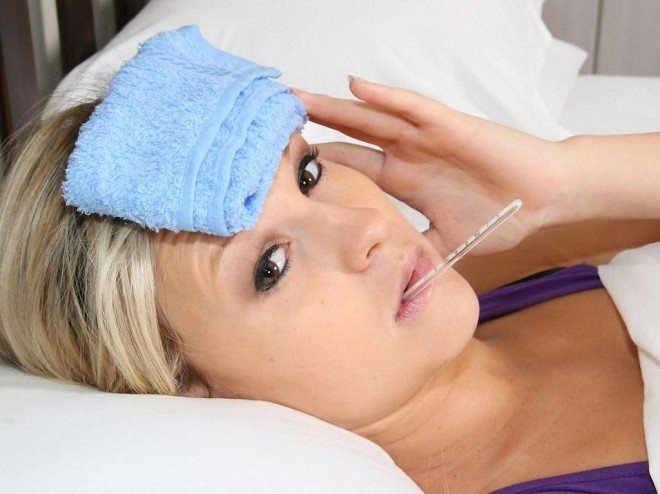
If the patient has digestive disorders, namely vomiting or diarrhea, the amount of fluid consumed should be strictly controlled to prevent dehydration.
Taking painkillers
You can resort to painkillers such as Nurofen or Ibuprofen when the patient has severe back pain, fever, or severe headache.
How to apply a compress to the injection site
The appearance of a lump at the injection site is an unpleasant phenomenon. Ointments, for example, Troxevasin, will help fight it. Thanks to their action, the seal gradually dissolves.
In serious cases, it is better to make compresses:
- magnesia - soak a gauze pad with the solution, apply to the bump, fix;
- aspirin + alcohol – dilute one aspirin tablet with two tablespoons of alcohol, apply to the seal, pre-treated with natural oil of plant origin.
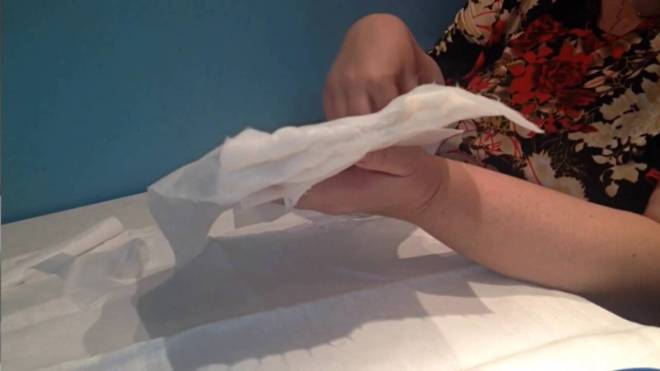
Similar procedures are carried out daily or every other day. Usually two to four times is enough.
How long will it hurt
If the procedure was carried out correctly, the discomfort will go away in two to three days. If the vaccine does not get into the subcutaneous fat, but under the skin, then the process will be longer. Doctors usually call the period from a month to a year. The vaccine is slowly absorbed, and the process takes several months. The discomfort is quite long-lasting and resorption can be accelerated by regular compresses with aspirin and alcohol.
The difference between a normal immune response and a complication
In adult patients, serious complications after vaccination occur much less frequently, because vaccination begins in infancy and the immune system improves over time. The body's defenses undergo additional stimulation as we grow older. Less common than pain is urticaria. It can develop as soon as the microbial strain is introduced or several days after the infection. After the injection, swelling may also develop, which forms at the puncture site. In some cases, it spreads to the shoulder area or arm, neck.
Doctors consider one of the complications to be the appearance of cramps or pain in the joints due to inflammation. After the injection, you may feel dizzy and your vision may become dark. Fainting occurs less frequently. Migraine is considered a normal reaction of the body after an injection. During the period of formation of antibodies and immune defense, doctors note that loss of appetite is possible for a day or a couple of days. Over time, appetite returns to normal.
After the injection, doctors note complications such as increased and uneven pulse or slow heartbeat. The patient may experience breathing problems, for example, a person chokes, coughs for no apparent reason, or develops shortness of breath.
Popular How to prevent the virus with the polio vaccine

The worst complication after vaccination is anaphylactic shock. If the patient is not provided with timely assistance, this can even result in the death of the person. If there is simply pain in the shoulder blade area, then this is a normal reaction of the body to vaccination. At this time, the body actively produces antibodies to the invading bacteria. Regular painkillers will help you cope with unpleasant symptoms. The grafted area can be smeared with absorbable ointments.
But after the injection, you should be more careful about your health so as not to miss any complications that develop. It is especially important to monitor the child’s condition. They are more difficult to tolerate vaccinations. They are more likely to have complications. Particular attention should be paid after the very first vaccination.
Vaccination under the shoulder blade: why the injection site is swollen, and what to do about it
Subcutaneous administration of vaccines has one significant drawback - local reactions occur very often. However, with an injection under the shoulder blade, the risk of their occurrence is still lower than with injections in other areas.
But things don't always go smoothly. Patients are upset when a lump appears at the injection site that does not dissolve for a long time, and the injection under the shoulder blade hurts. This is a possible reaction and is considered normal. Still, everyone wants to get rid of the discomfort brought by a lump. There are recommendations for this case:
- iodine mesh and various ointments will speed up the resorption of the resulting compaction;
- folk remedies - cabbage leaves, honey-rye cakes - remain effective for a long time;
- A lotion with Novocaine or magnesia (25% solution of magnesium sulfate) will help relieve severe pain.
If the lump is large, does not go away after compresses, pus appears, self-treatment will not help. You need to urgently contact specialists. Surgery may be needed. Using local anesthesia, the doctor will remove the purulent contents, disinfect the wound, and prescribe medications to eliminate inflammatory processes.
Recently, many people are refusing vaccinations after reading information about complications on the Internet. Such refusals flow into the real “anti-vaccine movement.” Of course, everyone decides for themselves whether they need vaccinations or not. It is important to remember that vaccination is a serious measure that over the years has saved hundreds of thousands of human lives from fatal diseases. Injecting drugs under the shoulder blade is one way to make the immunization procedure less painful while maintaining its effectiveness. To avoid complications, you should listen to the advice of doctors and follow the rules of immunization. Then preventive measures will only be beneficial, will become the basis for the formation of strong immunity and will help maintain health for many years.
Basic prohibitions after vaccination

To avoid unpleasant consequences from getting a tetanus shot, you should take care of yourself after getting the immunization under the shoulder blade and give up some everyday habits:
- adult patients should forget about drinking alcohol for a while (doctors prohibit adults from drinking alcohol for a week);
- for about 5 days it is not recommended to visit places such as sauna, swimming pool;
- you cannot take a bath with sea salt or aromatic oils for 3-4 days;
- It is prohibited to combine tetanus vaccination with sports and heavy physical labor.
Many patients worry about whether the tetanus shot site can be wetted. Contrary to existing prejudices, the injection mark is absolutely not afraid of water. Therefore, you can safely wet it. A warm shower will not cause any harm to the area where the antitetanus suspension was administered. The only restriction is that it is forbidden to rub this area with a hard washcloth.
Another misconception is the ban on walking. Remember, if the child feels well and has no symptoms of post-vaccination disorders, then feel free to go into the fresh air and give your tomboy the opportunity to have fun playing active games on the street.
